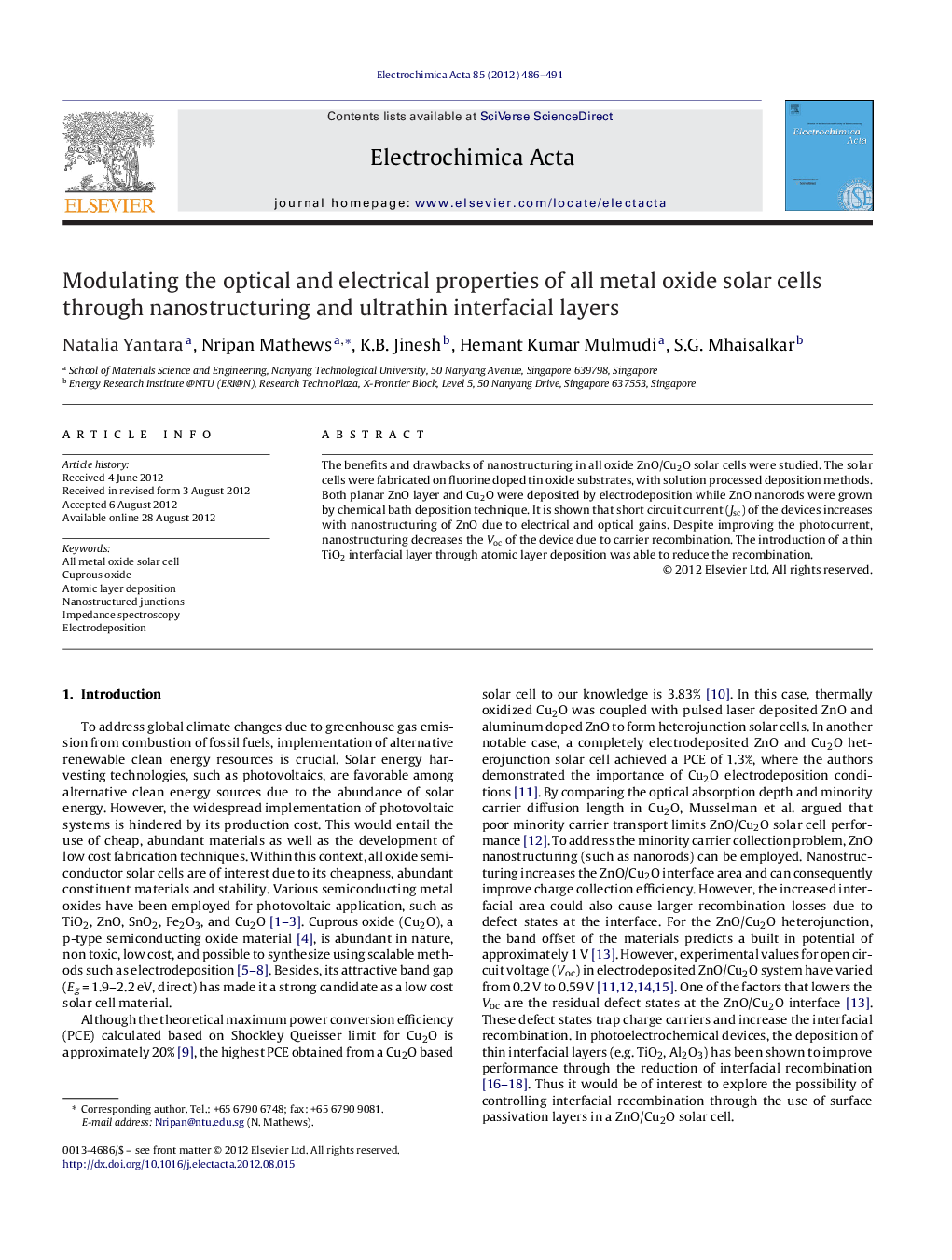| Article ID | Journal | Published Year | Pages | File Type |
|---|---|---|---|---|
| 187830 | Electrochimica Acta | 2012 | 6 Pages |
Abstract
The benefits and drawbacks of nanostructuring in all oxide ZnO/Cu2O solar cells were studied. The solar cells were fabricated on fluorine doped tin oxide substrates, with solution processed deposition methods. Both planar ZnO layer and Cu2O were deposited by electrodeposition while ZnO nanorods were grown by chemical bath deposition technique. It is shown that short circuit current (Jsc) of the devices increases with nanostructuring of ZnO due to electrical and optical gains. Despite improving the photocurrent, nanostructuring decreases the Voc of the device due to carrier recombination. The introduction of a thin TiO2 interfacial layer through atomic layer deposition was able to reduce the recombination.
Related Topics
Physical Sciences and Engineering
Chemical Engineering
Chemical Engineering (General)
Authors
Natalia Yantara, Nripan Mathews, K.B. Jinesh, Hemant Kumar Mulmudi, S.G. Mhaisalkar,
